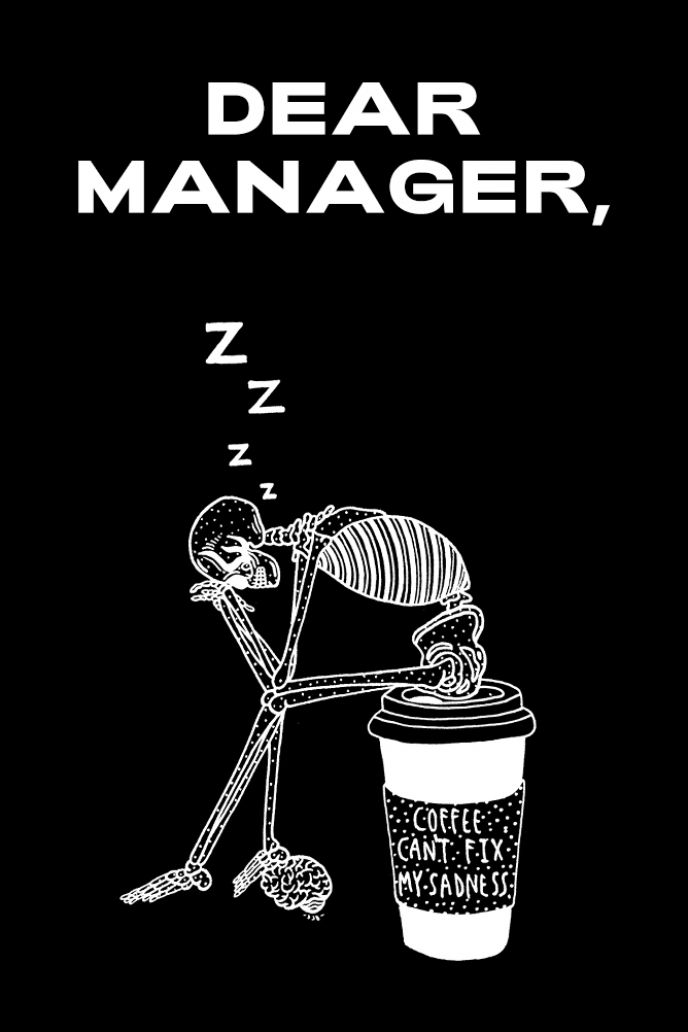The Business Case for Investing in Employee Mental Health
Why employers need to prioritize workplace mental health.
Written by Rachel Unger

01 Although mental health issues are common, shame and stigma prevent many people from seeking the help they need.
02 When we ignore these issues in the workplace, it’s bad for employees and bad for business.
03 Employers that invest in workplace mental health stand to gain a $3 to $5 return on their investment and are more likely to retain their workers.
Your star employee hasn’t been her normal self. Her usual punctuality has given way to lateness. She seems distracted and disengaged during meetings. It’s been like this for a week or two, and you’re not sure how to help.
Mental health issues are extremely common and can be long-lasting. Many people carry on at work while dealing with them. In an ideal world, someone who is struggling would feel empowered to ask for accommodations. Unfortunately, stigma and fear of retribution often lead people to suffer in silence. Not enough of us know how to recognize the symptoms that someone is struggling with their mental health, which makes it hard to step in and support.
About one in five adults will experience mental health issues in a given year. One in ten will experience depression, a leading cause of disability that affects more than 264 million people worldwide. Depression and anxiety are the most commonly referenced types of mental health issues, but workers are living with conditions across the mental health spectrum: obsessive-compulsive disorder, substance use disorders, eating disorders and more. These conditions may be common, but many people are afraid to speak up and seek treatment. We all have cause for concern when it comes to the state of mental health in the workplace.
What Mental Health Means for Your Organization
As an employer, you’ll receive measurable returns on your investments when you prioritize employee mental health. Every dollar of investment in mental health promotion has been shown to result in a three to five dollar benefit for companies. A mentally healthy workplace leads to increased rates of innovation, higher levels of productivity, better customer service and more positive interactions with co-workers.
In addition to boosting employee wellbeing, investments in workplace mental health can majorly benefit businesses in terms of lowering total medical costs, lowering disability costs and reducing missed days of work. When employees have the resources and support they need to stay healthy and engaged on the job, they turn out better work and are more likely to stay with their company long-term.
When it comes to the cost of not investing your employees’ mental health, the statistics are staggering—both in terms of human suffering and in damage to the economy. Each year, depression and anxiety disorders cost the global economy $1 trillion in lost productivity. Mental disorders are predicted to cost the global economy $16 trillion by 2030, with an estimated 12 billion working days lost due to mental illness every year. In 2010, the economic burden of depression alone exceeded $210 billion.
Direct mental health treatment costs, such as health insurance contributions and pharmacy expenses, as well as the added costs of treating comorbid conditions (e.g., diabetes), may seem expensive for businesses. The true economic burden, however, are indirect costs, which surpass direct mental health treatment costs. These indirect or “invisible” costs are a product of absenteeism (missing work because of poor mental health), presenteeism (lack of productivity due to working while ill), turnover or “churn rate,” replacement costs, work disability costs, and premature mortality. We are working in a world where productivity losses are a fivefold multiple of direct medical costs.

How to Spot the Signs of a Mentally Healthy Workplace
Dr. Ramani Durvasula explains how to spot the signs of a mentally healthy workplace.
The Impact of Stress
If left untreated, work-related stress can also lead to costly and severe mental health issues. Researchers have estimated that work-related stress takes a yearly toll of 120,000 deaths and results in up to $190 billion in healthcare costs. A 2016 study estimated that the cost of lost productivity resulting from absenteeism in the United States was more than $84 billion. Stress and anxiety put undue pressure on our working relationships and negatively impact our ability to perform well at our jobs.
A Win-Win for Employers and Employees
The truth is, we can’t afford to ignore mental health in the workplace. Making these investments can save not only dollars but also lives. For the sake of employees—and businesses’ bottom line—companies need to provide resources for a mentally healthy workplace. We also need to change perceptions about mental health at work so that employees feel safe asking for help and seeking care and managers know how to spot the symptoms.
The status quo is not sufficient to meet this challenge, and inaction will continue to cost far more than the price of investing in employee mental health. Access to quality mental health care, supportive workplace policies and comprehensive mental health education should be a cornerstone of your strategy for getting the most out of your workers. Your workforce is your greatest and most precious asset, and what’s good for your employees is also best for your business.
About the author
Rachel Unger is a writer and editor based in Washington, D.C. She's passionate about raising mental health awareness and promoting fairness in the workplace.
Support our work
We’re on a mission to change how the world perceives mental health.



















